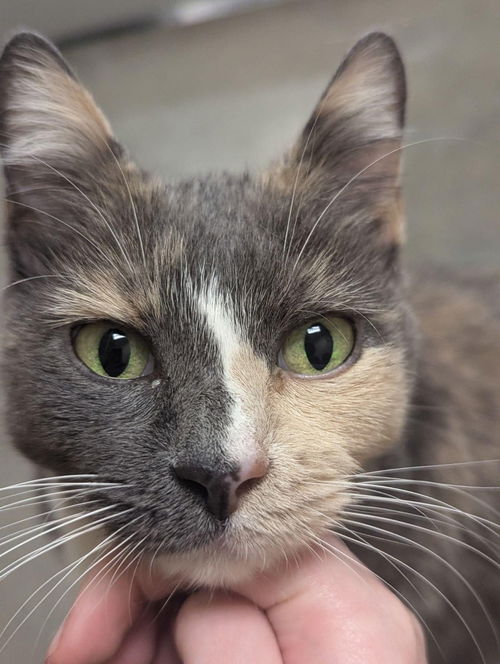Becoming a County Shelter Volunteer
Many people ask about the difference between the King George Animal Rescue League (KGARL) and King George Animal Control (KGAC). KGARL is a private, non-profit organization, whereas KGAC is a government agency, funded by the state of Virginia. KGARL works with KGAC to help get animals out of the pound and into the safety of various animal rescue groups. KGAC needs volunteers who can help with transporting animals, and taking pictures and videos of animals that can be shared with other rescue groups and potential adopters.
KGAC has rules and procedures that volunteers need to follow, including their own application to volunteer. This application is seperate from the KGARL membership application. You do not have to be a KGARL member to volunteer at the county animal shelter, but being a KGARL member will allow you to stay in touch with other volunteers through our private facebook page and through email communications.
After you download the KGAC volunteer application , please fill it out and turn it in to the shelter. Once a month, KGAC holds a volunteer orientation and an officer will contact you to schedule your training. To learn more about KGAC and how to volunteer at the pound, please visit their website . Once you have gone through the orientation and are an approved KGAC volunteer, please sign up to help socialize the animals, and send their pictures to KGARL so that we can advertise the animals to other rescue groups.
King George Animal Control
11377 Citizens' Way
King George, VA 22485
Business Hours: 540-775-2120
KG Sheriff's Office: 540-775-2049
KGAC Hours of Operation:
Monday through Friday 10 - 4:30
Saturday 10 -1
Sunday and Holidays Closed
Volunteers are Making a Difference!!
In 2005, a staggering 90% of the cats and 46% of the dogs were euthanized as compared to 2.2% of the cats, and 3.9% of the dogs in 2021. As you can see, although the total number of animals coming into our County Pound sadly remains high, we continue to work hard to keep the number of euthanized animals very low. In most cases, the animals are only euthanized in cases of severe health issues, or aggression.
DOGS
2005: Total Received – 381, Euthanized - 177 (46%)
2006: Total Received – 424, Euthanized - 174 (41%)
2007: Total Received – 358, Euthanized - 71 (20%)
2008: Total Received – 417, Euthanized - 51 (12%)
2009: Total Received – 495, Euthanized - 43 (8.7%)
2010: Total Received – 435, Euthanized - 7 (1.6%)
2011: Total Received – 422, Euthanized - 5 (1.2%)
2012: Total Received – 300, Euthanized - 10 (3.3%)
2013: Total Received – 361, Euthanized - 20 (5.5%)
2014: Total Received – 343, Euthanized - 12 (3.5%)
2015: Total Received – 337, Euthanized - 14 (4.2%)
2016: Total Received – 318, Euthanized - 17 (5.3%)
2017: Total Received – 294, Euthanized - 10 (3.4%)
2018: Total Received – 350, Euthanized - 23 (6.6%)
2019: Total Received – 289, Euthanized - 17 (5.9%)
2020: Total Received – 265, Euthanized - 12 (4.5%)
2021: Total Received – 284, Euthanized - 11 (3.9%)
CATS
2005: Total Received - 375, Euthanized - 336 (90%)
2006: Total Received - 297, Euthanized - 235 (79%)
2007: Total Received - 244, Euthanized - 158 (65%)
2008: Total Received - 244, Euthanized - 45 (18%)
2009: Total Received - 241, Euthanized - 22 (9%)
2010: Total Received - 302, Euthanized - 10 (3.3%)
2011: Total Received - 305, Euthanized - 7 (2.3%)
2012: Total Received - 353, Euthanized - 16 (4.5%)
2013: Total Received - 292, Euthanized - 36 (12.3%)
2014: Total Received - 259, Euthanized - 14 (5.4%)
2015: Total Received - 313, Euthanized - 8 (2.6%)
2016: Total Received - 309, Euthanized - 10 (3.2%)
2017: Total Received - 402, Euthanized - 13 (3.2%)
2018: Total Received - 339, Euthanized - 14 (4.1%)
2019: Total Received - 332, Euthanized - 11 (3.3%)
2020: Total Received - 467, Euthanized - 18 (3.9%)
2021: Total Received - 493, Euthanized - 11 (2.2%)


